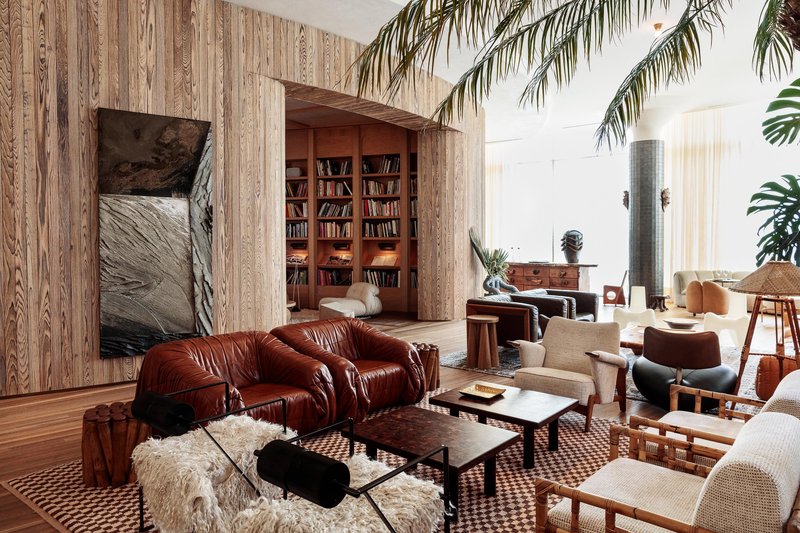
Decoding Heritage: How Kelly Wearstler Translates Local Identity into a Singular Design Language
Decoding Heritage: How Kelly Wearstler Translates Local Identity into a Singular Design Language
By [Editor’s Name], Interior Design Editor
In the landscape of contemporary interior design, where global trends often blur the line between inspiration and imitation, Kelly Wearstler stands apart as a fierce individualist. Her work does not merely reference heritage—it reconstructs it, translating indigenous cues into a meticulously crafted design language that is as personal as it is provocative. Through this lens, Wearstler becomes less of a decorator, and more of a cultural cartographer—mapping identity, materiality, and memory into spaces that are richly layered and deeply emotive.
From Reference to Rebirth
The power of Wearstler’s approach lies in her ability to reframe traditional elements not as relics but as raw material for a new aesthetic grammar. A hand-painted mural inspired by Mexican folk motifs, in her world, sheds its folkloric context and becomes a dynamic canvas of rhythm and saturation. The seemingly rustic—textured concrete, irregular stone, exposed brick—are not decorative flourishes, but compositional forces, driving interplay between light and void, roughness and refinement.
This is not homage. It is reimagination. What appears at first glance to be spontaneous is, in fact, highly deliberate. Her work echoes the cadence of jazz: bold, improvised, and yet underpinned by precise control. Tonal palettes—rich in oxidized metal, burnt umber, onyx black—speak of geological time and tactile memory, transforming material into metaphor.
Santa Monica Proper: A Manifesto in Space
Few projects illustrate this ethos more clearly than the Santa Monica Proper Hotel. Here, Wearstler draws from Southern California’s architectural vernacular—mid-century curves, organic masonry, sun-faded surfaces—and distills them into a sensorial experience. Raw concrete forms the bones of the space, but rather than remaining cold or austere, it becomes a sculptural field for soft velvet, bronze inlays, and diffused natural light.
It’s a conversation between gravity and elegance, where each texture is both historically rooted and forward-facing. As light shifts across the space, shadows animate the architecture like brushstrokes across a canvas. The message is clear: material is not neutral—it remembers, it resists, it tells.
Beyond Aesthetic: A Strategic Cultural Tool
Wearstler’s work presents an important lesson, particularly for designers in regions with deep craft traditions—Vietnam, Mexico, Morocco, or India—where cultural references are rich but often treated superficially in commercial design. Her approach demonstrates that local identity need not be literal to be powerful. Instead, it can be abstracted, orchestrated, and translated into spatial rhythm, creating environments that feel both rooted and avant-garde.
This has direct resonance with the emerging generation of Vietnamese designers, such as Như Hồng, who are beginning to fuse vernacular materials and metaphysical concepts into sculptural furniture and architectural décor. Like Wearstler, Như Hồng does not replicate tradition; she dissects it, distills it into forms, colors, and rhythms that carry the spirit—not the shape—of the past.
The Courage to Deconstruct
What sets Wearstler’s work apart is not just her access to luxury materials or clients, but her fearless commitment to visual complexity. She embraces contradiction: symmetry and asymmetry, polish and rawness, boldness and restraint. It is this tension—between the known and the unknown—that gives her interiors their arresting emotional charge.
In the hands of a lesser designer, such aesthetic chaos would collapse under its own weight. But with Wearstler, each space becomes a visual symphony, where every discordant note is purposeful, every rupture deliberate.
Conclusion: Towards a Design of Cultural Intelligence
Kelly Wearstler offers more than inspiration—she provides a framework. Her design process is a methodology for cultural transformation, a way to engage with the local not as ornamentation, but as ontology. For designers in the Global South especially, her work reminds us that heritage is not a burden to preserve—it is a source code to reinterpret.
And perhaps that is her greatest legacy: the belief that the most powerful designs do not imitate—they translate.






Leave a Reply